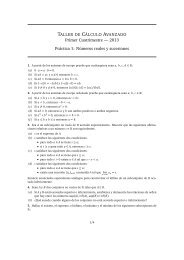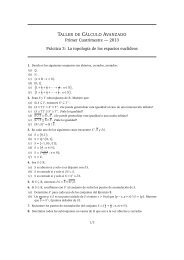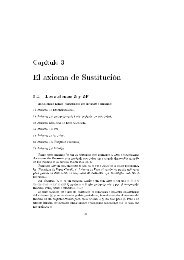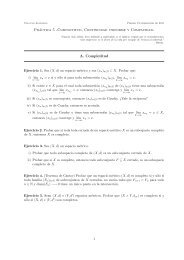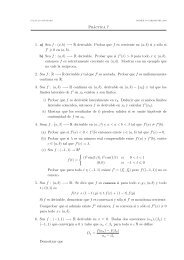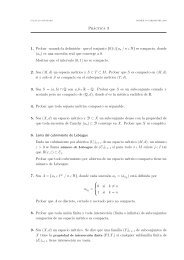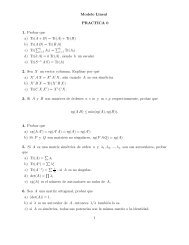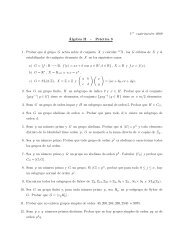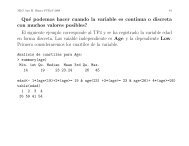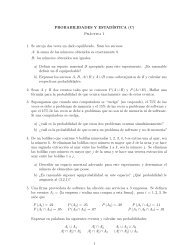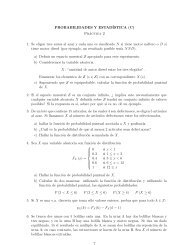Generación de Números Aleatorios
Generación de Números Aleatorios
Generación de Números Aleatorios
You also want an ePaper? Increase the reach of your titles
YUMPU automatically turns print PDFs into web optimized ePapers that Google loves.
Teorema: Sean U una variable aleatoria con distribución U ( 0,<br />
1)<br />
y G una función <strong>de</strong><br />
distribución acumulada. Existe una función H tal que H (U ) tiene distribución acumulada<br />
G .<br />
Ejemplos: Queremos generar una variable con distribución <strong>de</strong> Bernoulli <strong>de</strong> parámetro p a<br />
partir <strong>de</strong> una v.a. uniforme. Po<strong>de</strong>mos aplicar el siguiente procedimiento. Generamos<br />
U ~ U ( 0,<br />
1)<br />
y <strong>de</strong>finimos:<br />
⎧1<br />
⎪<br />
X = ⎨<br />
⎪<br />
⎩0<br />
si 0<br />
< U ≤ p<br />
si p < U ≤1<br />
En efecto, la nueva variable X toma sólo dos valores (0 y 1) y dado que p ∈(<br />
0,<br />
1)<br />
P ( X = x)<br />
= P(<br />
U ≤ p)<br />
= p<br />
y por lo tanto X tiene la distribución <strong>de</strong>seada.<br />
Notemos que en lugar <strong>de</strong>l intervalo ( 0,<br />
p) podríamos haber tomado cualquier intervalo en<br />
( 0,<br />
1)<br />
<strong>de</strong> longitud p .<br />
82



